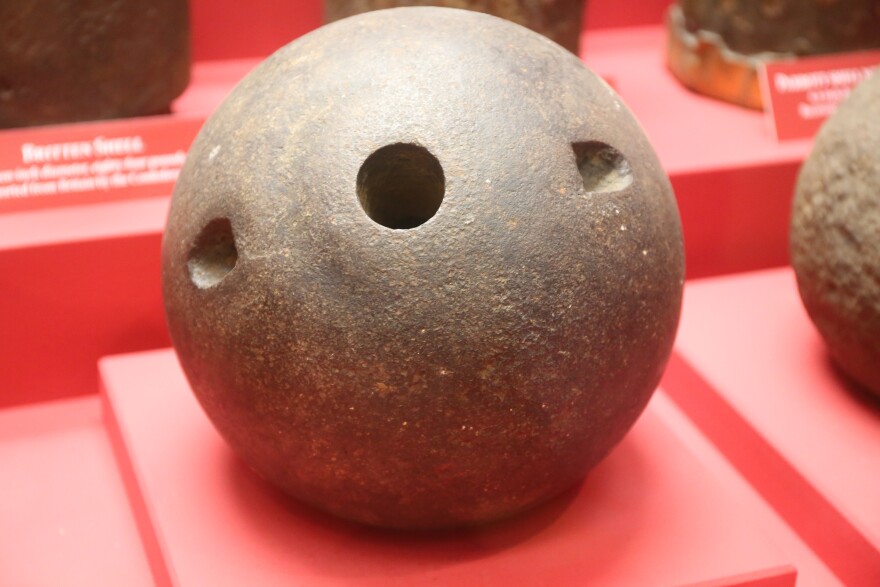Live cannonballs from more than 200 years ago continue to be found in Charleston. The relics from the Revolutionary and Civil Wars occasionally wash up on beaches or are found underground. While some are inactive hunks of metal, others could still explode.

In an empty field near Charleston, military bomb experts are getting ready to detonate a rusted cannonball from the 1800's. The ordinance is buried underground and wrapped in C-4. An expert yells, "Fire in the hole!" as an explosion rips through the air.
The nine-inch cannonball had black powder in it. Detective Carl Makins, a member of Charleston County's bomb squad, says that means it needed to be blown up. He gets several calls a year from citizens finding these heavy remnants from old wars.
Makins says, "A lot of people don't understand how dangerous these cannonballs are. Somebody hit them with a hammer it's kind of cool because of the sound they make and not understanding that's a potential time bomb."

Makins says cannonballs are occasionally found during construction projects or below the ground in people's backyards. After Hurricane Matthew, more than fifteen Civil War-era cannonballs washed ashore on Folly Beach.
Air Force Staff Sergeant Patrick Dougherty says the first step to removing a cannonball is an X-Ray to see if there's explosive powder inside.
Dougherty says, “You get kind of like a halo, because as you go to edges around a sphere the metal that you are going to be capturing around the outside is going to be the thickest part.”
The ones with black powder need to be safely removed and exploded.

Dougherty and his co-workers also look out for historical pieces for the Charleston Museum, which has more than 200 cannonballs of all different shapes and sizes. The museum's curator, Grahame Long, says he works with the military to help identify where the ordinance might be from -- he can tell quite a bit about a cannonball from its size, condition, and where it was found.
Long says, “We can actually work backwards from that. We can take a position. We can take a GPS. We can take a compass reading and from there really kind of trace this thing to a general area from where it would have been fired at the city.”
Long believes only a fraction of the cannonballs have been unearthed and expects they will be found for years to come.


